RAWHEAD REX is one of the most misunderstood cult monster movies to escape the 1980s. It’s an grisly creature-on-the-loose feature with some neat special effects and some well staged set pieces, courtesy of its director, George Pavlou.
After all these years of being stuck with a VHS copy of RAWHEAD REX that I bought at a convention in Texas nearly a decade ago, I recently watched the Kino Lorber Blu-Ray and noticed just how effectively put together the whole thing is (and how funny it actually is, too). I figured Clive Barker had probably gotten his side of the story aired out enough, and it was time for the other side of the creative team to get their due: George Pavlou, whose loyalty to this interview never waned over the six months since discussions began to do talk on the film.
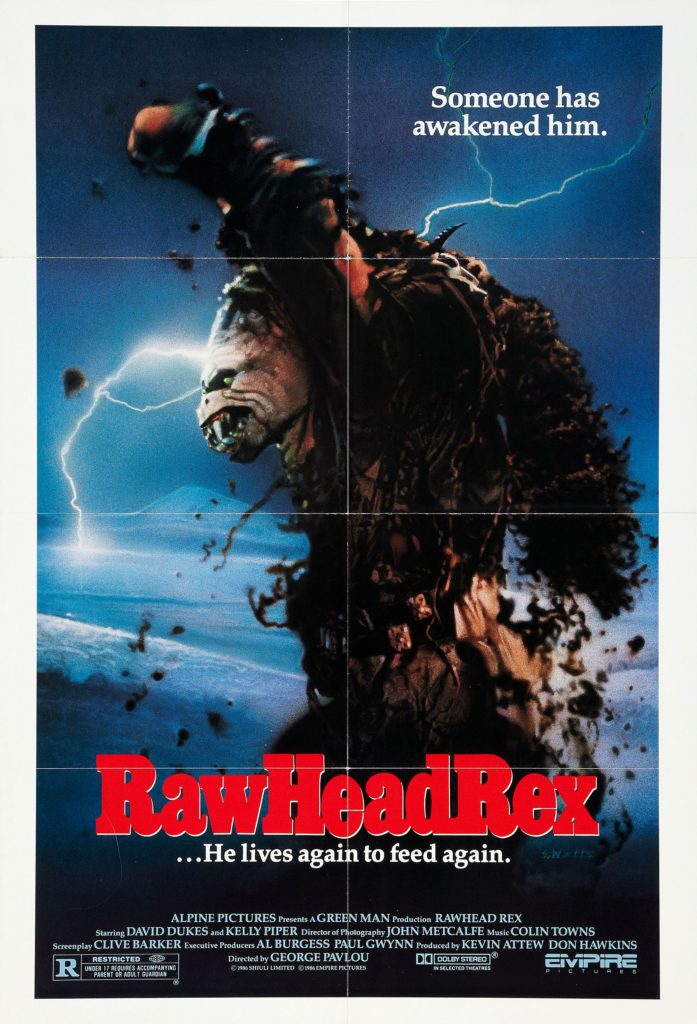
Daily Grindhouse: As you’ve made two films with Clive Barker, I’d like to start out by discussing your working relationship. Was RAWHEAD REX something you and Clive discussed making, or was it brought to you after the fact?
George Pavlou: I met Clive through a mutual friend who had gone to university with him. I showed him a couple of short films I directed, which he liked, and we discussed working on a project together. Clive was not known by the public at that time, his books had not been published, but he was involved as a writer with a fringe theatre group, writing plays. He actually wrote another short story for me called Underworld, which was filmed 3 or 4 years later, after we first met. The producers of Underworld, Kevin Attew and Don Hawkins of Greenman, also purchased the option on 5 other stories from The Books Of Blood, which Clive had now finished in manuscript form but still not published. The decision to make RAWHEAD REX as the second film in the slate after Underworld was a Greenman decision, but also agreed upon by Clive and me as a good choice for the second film. I can’t remember all the details from 30 years ago, but Clive and I discussed with the producers that it potentially could be a highly original creature feature with some very dark elements.
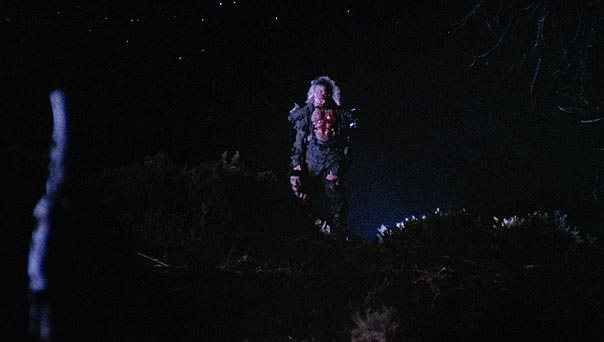
Daily Grindhouse: There are some minor changes from the short story to the film. Were those changes something you and Clive cooked up, or were they more studio-mandated or budgetary?
George Pavlou: Clive was left to write a draft of his choice without interference. I recently scanned through that first draft and noticed the ending was near enough similar to the short story, whereby Hallenbeck was the conduit for the power of the fertility stone to overcome Rawhead, however, in the second and subsequent drafts his wife was the conduit of that power, which is how the final film ends. I’m not sure how that came about or when it was discussed, but many people have since agreed and told me it does make more sense that a female should ultimately be the force that destroys Rawhead. I personally didn’t want to interfere with Clive’s own adaption of his short story, so as afar as I can remember, he was free to make his own decisions and to change and adapt his story into a screenplay he was happy with, and to create the mythology of Rawhead for the screen.

Daily Grindhouse: Can you tell me a bit about the thoughts behind the creature’s design, as it differs from the book?
George Pavlou: The creature design was based on concept art created for the production by a very young Paul Catling. Paul went on to work on some great movies as a creature concept artist including Harry Potter, Alien V Predator, Guardians of the Galaxy, Dr. Strange, and many more blockbusters. Again, it was over 30 years ago, so I don’t recall the absolute details, but I do remember that Clive discussed those designs, and his view was that Rawhead should very tall and be very, very thin, much like the Alien in the first ALIEN movie, amongst other ideas he had, but the makers of the creature argued that to find somebody that tall and thin would be almost impossible to fit into the prosthetic suit. At that time there was no VFX to build creatures as we do now, so the producers agreed with the effects company to go ahead with Paul’s design. There was no artwork based on Clive’s book at that time as source material, other than the words on the pages in Clive’s book. The comic book of Rawhead came long after, however I have to say that I am not a fan of the penis-looking Rawhead as depicted in the comic book. I think it looks too jokey. If we were to design Rawhead with today’s technology, it would obviously differ to the 1986 version, and I would like it to approach closer to Clive’s vision of him, but not the comic book version.
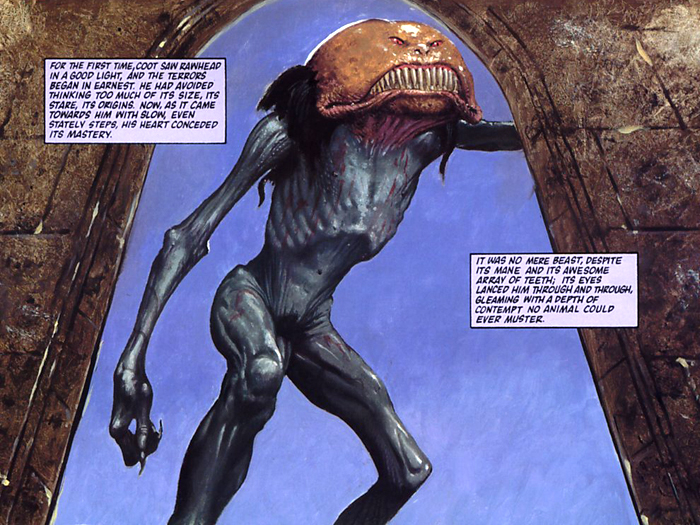
Daily Grindhouse: How did you go about deciding to shoot the film in Ireland?
George Pavlou: The choice was a financial one. The financiers were Irish, and the money had to be spent there. But we hadn’t anticipated that the weather would turn out to be one of the worst on record in Ireland that year, which caused many delays and problems to the already tight schedule.
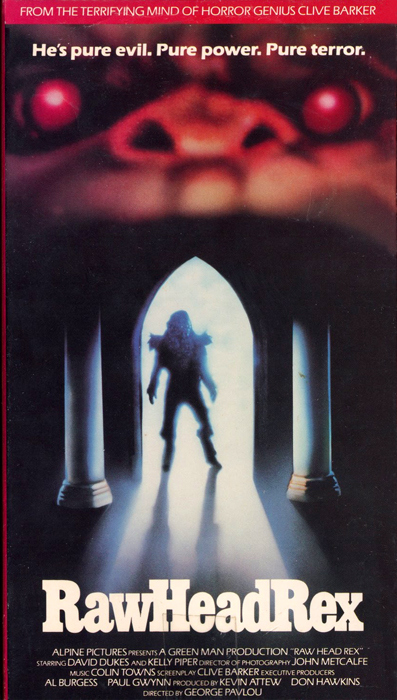
Daily Grindhouse: This film is the holy grail for horror fans, and they’ve been wanting it on Blu-Ray for a long time. Would you mind going into the various hurdles into getting it out onto home video?
George Pavlou: The fact is, after seeing so many uploads of the really bad quality TV version of the film on YouTube around 2008, I decided I had to do something. The low resolution was bad enough, but also the square format was frustrating and horrible for me to see it like that. I decided that somehow I had to get hold of the negative and find a way to release the widescreen version. I had no idea where the producers had gone to, or who owned the rights. My first thoughts were to find out where the original negatives were being stored, so I contacted the UK lab which processed the film back in 1986. The lab contact informed me that MGM held all the original materials in Los Angeles, and they too were looking for the rights owners, as their rights had long expired and they wanted to re-release the film. After discussions with MGM, who would naturally not release any materials to me personally, it was clear and necessary for me to make contact with the rights owner. I had known for some time that the investors of the film were the rights owners, but I had no idea who the investors were, and the main hurdles were that all the companies that were involved in the film had long ceased trading, so I had no contact details for any of them — however, the film’s end credits, which I had overlooked for some time, held the key. After some basic detective work, I traced the directors of that company, and they agreed to pass the rights to me. After an overly protracted process with MGM, they finally passed over the materials to me. That was ten years of effort and persistence, because I really wanted to get a wide screen copy for myself at the very least, but as it turned out, we now have a 4K restoration, a cinema release, and a Blu-Ray with lots of cool extras, which has pleased me enormously.
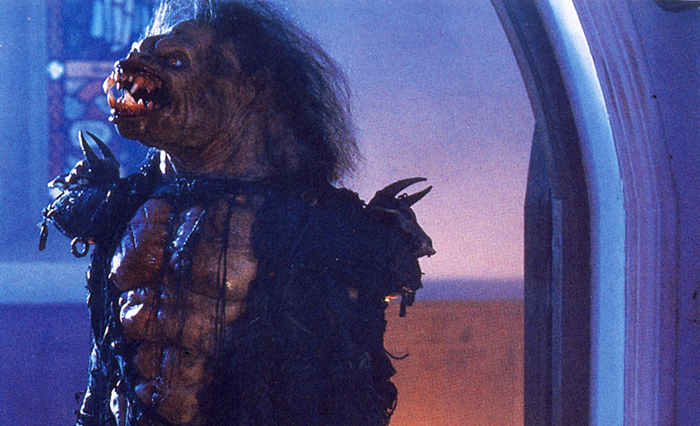
Daily Grindhouse: In all honesty, what are your feelings on RAWHEAD REX all these years later?
George Pavlou: I’m very happy to have gone through the whole painful process of achieving a re-release. What has really pleased me is that I had no idea that RAWHEAD REX had been so sought after by the fans of the film, nor did I realise the film had such a cult following or that it was the holy grail for horror fans 30 years after its original release. Thanks to social media these days, it is very gratifying to see some true warmth and love from fans for RAWHEAD REX, despite its obvious flaws. But as a creature feature of the 1980s, and what it attempted to do for the year it was made, with its incredibly short production schedule and low budge,t I feel I have to be content if not totally satisfied with the end result. The film’s budget should have been around $5m for that year — however, it was reduced to a budget of around $3m, but the producers started production with only around $1.5m secured, and the rest of the money never materialized, leaving me with a huge headache to complete not just on schedule but with a lot of the pre-production casting problems, as well as the shooting logistical problems that I encountered, which I had to resolve on a daily basis. The film had an ambitious schedule, with many locations, working in atrocious weather conditions, ambitious animatronics and prosthetics, the most stuntmen ever set on fire in a film, and large sets that had to be built from scratch on location. The other factor was that this was a Union film and not an Indie film that could bend the rules on salaries and working conditions, so inevitably the production had to creak from the seams due to the budget restraints, but the producers were good at their job in keeping the production going somehow, and the crew were amazing to be so supportive to get the job done.
Many thanks to George for his time and for his thoughts.
Tags: clive barker, George Pavlou, Horror, Interviews, Rawhead Rex

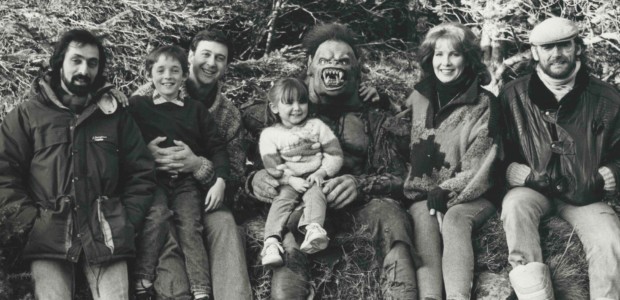


No Comments